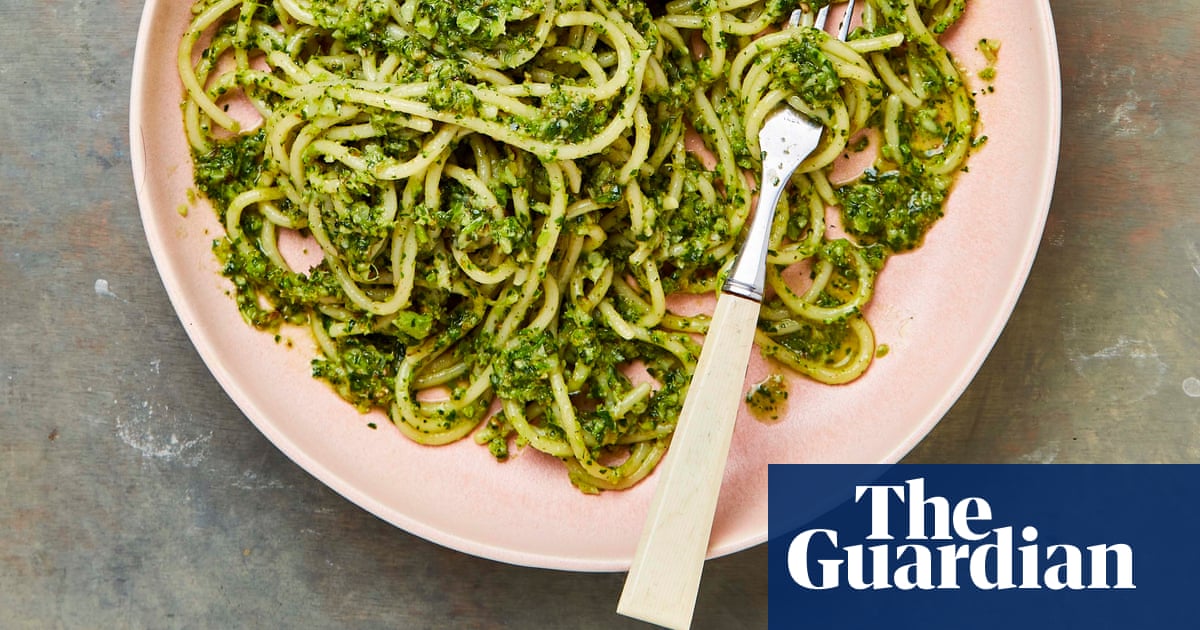Comfort food means different things to different people, and today’s recipes are what do it for me. Rasam is the dish I crave whenever I’m feeling under the weather, because it gives me a boost. This thin, brothy soup is considered to be very good for digestion, so in Malaysia we often serve it at the end of a meal. Rendang, meanwhile, originated in Indonesia before becoming popular across south-east Asia, and is now particularly associated with Malaysia. It is spicy, sweet and very fragrant, because it features both lemongrass and lime leaves. I learned how to cook it from my mum and auntie back at home in Seremban – Mum’s version uses fresh green chillies, but I also add some dried kashmiri chillies, to give it a darker colour and, in my opinion, a better flavour, too. As with many Malaysian recipes, it all begins by making a kari paste, which you can do well in advance, if you wish. Mum taught me to cook the meat separately from the paste, but nowadays I tend to cook them together in the same pan for ease.
Rasam, or tomato garlic broth (pictured top)
This is packed full of garlic, which is renowned for helping to fight infection, all blitzed to a paste with the skins on.
Prep 10 min
Cook 15 min
Serves 4
½ tsp ground turmeric
2 tsp salt
10 curry leaves
10g fresh coriander, stalks and leaves roughly chopped, plus extra to serve
50g tamarind mixed with 100ml water, strained and liquid reserved
For the paste
10 garlic cloves, unpeeled
2 medium tomatoes, roughly chopped
2 tsp freshly ground or whole black peppercorns
2 tsp cumin seeds
2 tsp coriander seeds
1 dried kashmiri chilli, stalk and seeds removed and discarded
50g cherry tomatoes, roughly chopped
First make the paste. Put all the paste ingredients apart from the cherry tomatoes in a blender, add 100ml cold water and blitz to a smooth paste. Add the cherry tomatoes and pulse to combine.
In a medium-large saucepan, bring 800ml water to a boil with the turmeric and salt. Once boiling, add the paste, curry leaves and coriander, and simmer for five minutes. Stir in the tamarind juice and serve piping hot with an extra scattering of coriander.
Rendang ayam, or chicken rendang

We serve the more traditional beef rendang at the Roti King restaurants, but chicken works brilliantly with the same aromatic spices. Rendang is not particularly saucy – it’s much drier than classic karis – and is always eaten with coconut rice or roti.
Prep 10 min
Cook 50 min
Serves 4-6
For the paste
2-4 fresh green chillies (depending on your heat preference), stalks discarded, pith and seeds removed if you prefer less heat
5 dried kashmiri chillies, stalks and seeds discarded
2 sticks lemongrass, tops cut off and discarded, the rest bashed and roughly chopped
35g fresh turmeric root, peeled and roughly chopped
35g fresh galangal, peeled and roughly chopped, or ginger
1 tbsp vegetable oil
For the rendang
3 tbsp vegetable oil
1 cinnamon stick
1 stick lemongrass, bashed and bruised
600g skin-on bone-in chicken thighs
1½ tsp salt
40g fresh or frozen shredded coconut, or 60g grated coconut block
130ml coconut milk
2 tsp dark brown sugar
¼ tsp coriander seeds
¼ tsp fennel seeds
6 makrut lime leaves, stems discarded, rest finely sliced into strips
To make the rendang paste, simply put everything in a blender with 100ml water and blitz to a smooth paste; if need be, add a little more water to loosen. If you’re not using the paste straight away, store it in an airtight container in the fridge for up to two weeks.
Now to cook the rendang. Put the oil in a large pan for which you have a lid and set it over a medium heat. Break the cinnamon stick in half, add it to the pan with the lemongrass, then stir in the rendang paste and cook over a low heat, stirring often, for five to 10 minutes. Add the chicken and salt, give everything a good stir to coat, then turn down the heat to low, cover the pan and leave to cook, stirring occasionally, for 10 minutes.
Meanwhile, in a dry nonstick frying pan on a medium heat, toast the shredded coconut (or grated block coconut), stirring continuously, for three minutes, until it turns golden brown. Tip into a mortar, then pound to a paste (if you are using grated coconut block, there’s no need to toast or pound it).

Add 100ml water to the chicken pot, stir, cover again and cook, stirring occasionally, for a further 20 minutes. Add the coconut milk, cook for another 10 minutes, then stir in the toasted coconut (or grated coconut block) and sugar.
In a small dry pan, toast the coriander and fennel seeds until they’re fragrant and start to pop, tip into a mortar and bash roughly. Tip the broken seeds into the chicken pot, stir in the shredded lime leaves and leave to cook for another two minutes. Serve with coconut rice.
-
These recipes are edited extracts from Roti King: Classic and Modern Malaysian Street Food, by Sugen Gopal, published this week by Quadrille at £18.99. To order a copy for £17.09, go to guardianbookshop.com

.png) 8 hours ago
8
8 hours ago
8













































